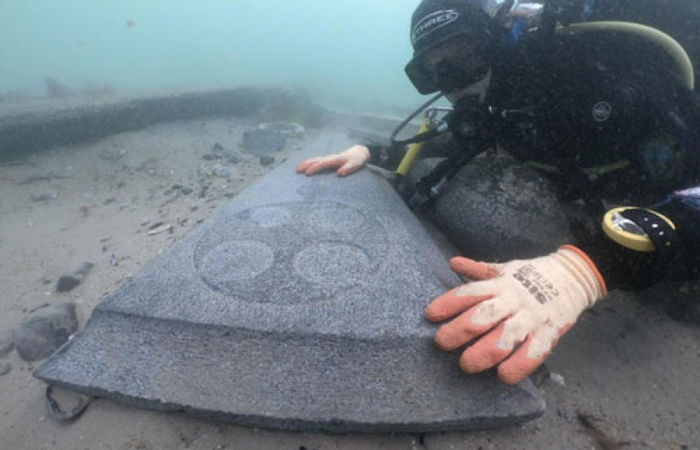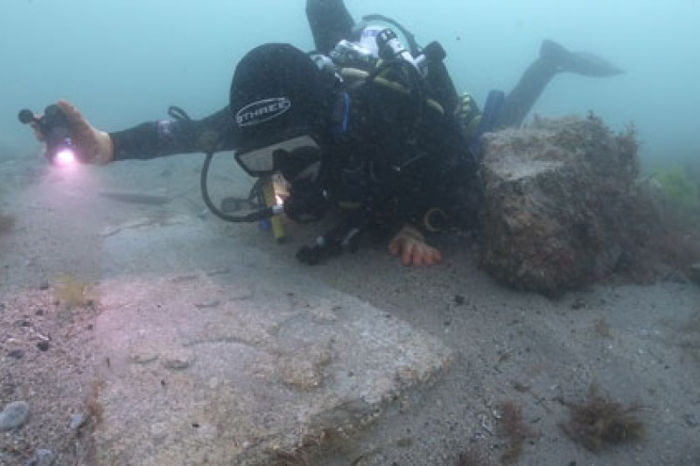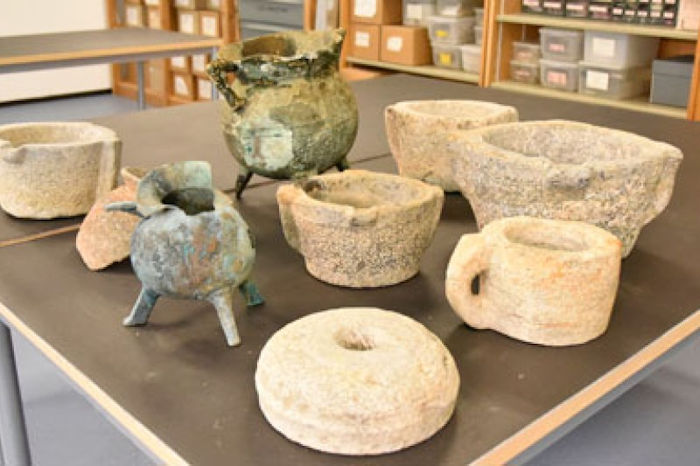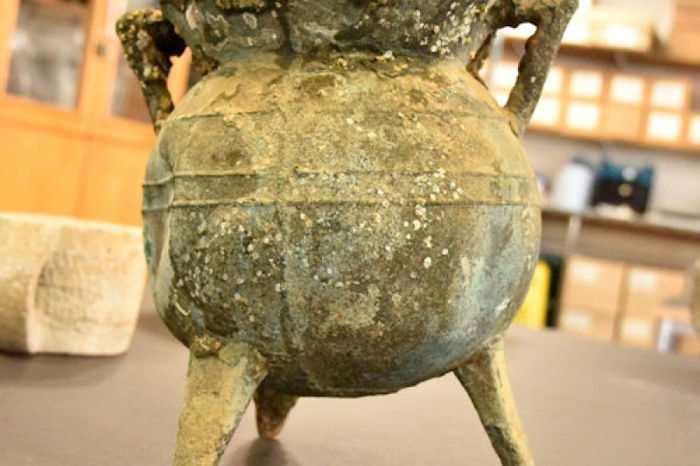Conny Waters – AncientPages.com – Maritime archaeologists from Bournemouth University have uncovered the remains of a medieval ship and its cargo dating back to the 13th century off the coast of Dorset. The survival of the vessel is extremely rare and there are no known wrecks of seagoing ships from the 11th to the 14th centuries in English waters. The discovery makes this the earliest English designated wreck site where hull remains can be seen.

Credit: Bournemouth University
The ship was discovered in Poole Bay on the edge of the Swash Channel by local charter boat skipper Trevor Small of Rocket Charters who reported the discovery to archaeologists from Bournemouth University. Trevor said: “I was born into a seafaring family.
I’ve skippered thousands of sea miles looking for shipwrecks from my home port of Poole. In summer 2020, I discovered what I believed to be an undetected wreck site. Recent storms had revealed something unknown on the seabed. I was granted permission to dive the wreck. The rest is history! I’ve found one of the oldest shipwrecks in England.”

Credit: Bournemouth University
Maritime archaeologist, Tom Cousins who is part of the team at Bournemouth University ᴀssigned to uncover and preserve the wreck said: “Very few 750-year-old ships remain for us to be able to see today and so we are extremely lucky to have discovered an example as rare as this, and in such good condition. A combination of low-oxygenated water, sand and stones has helped preserve one side of the ship, and the hull is clearly visible.”
The vessel, known as a clinker ship in its design, is made from overlapping planks of wood and was carrying a cargo of Purbeck stone. The shipwreck is referred to as the ‘Mortar Wreck,’ since much of the cargo contained within the wreck also includes several Purbeck stone mortars, which are large stones used by mills to grind grains into flour.
Purbeck stone is a form of limestone made from densely packed shells of freshwater snails. Quarried on the Isle of Purbeck on the south coast of England, the stone is also referred to as Purbeck marble, due to its ability to be highly polished. Purbeck marble is used in Gothic architecture across Britain and the continent. Other items found in the wreck include a cauldron used to cook food in, which would have been placed directly onto a fire. Two Purbeck marble gravestone slabs were also found in the wreck in remarkably good condition.
Purbeck marble gravestone slabs were widely used across the south of England and were exported to Ireland and the continent. One of the slabs features a wheel headed cross, an early 13th century style, while the other features a splayed arm cross, common in the mid-13th century.

Credit: Bournemouth University
The discovery has re-written our understanding of how gravestone slabs were produced according to Brian and Moira Gittos from the Church Monuments society who said: “Even this early stage in the investigation, it has been clearly demonstrated that two cross head designs which were previously thought to be part of a developmental sequence were actually in use at the same time.
Further work on the wreck is very likely to greatly enhance our understanding of the work of the medieval Purbeck marblers’.” These were found to be carved, rather than blank slabs which suggests that these were produced as a form of industry. It is believed that the unpolished slabs would have either been carved at a local quarry, or at a workshop.
Duncan Wilson, Chief Executive of Historic England, who has been working closely with the university said: “The 13th century ship with its cargo of medieval Purbeck stone is fascinating because it is the earliest English protected wreck site where hull remains are present.”

Credit: Bournemouth University
Tree ring analysis indicates that the timbers used to construct the hull are from Irish oak trees, felled between 1242-1265.The Irish origin of the timbers doesn’t necessarily mean the ship was constructed in Ireland as Irish oak was widely exported for shipbuilding during the medieval period. One theory is that the ship may have been lost on its way out from the Dorset coast, with its cargo of Purbeck stone.
See also: More Archaeology News
Our new maritime galleries are part of Our Museum Project £4.3m redevelopment of the museum, supported by The National Lottery Heritage fund. They will open to the public in 2024, and local residents and visitors will be able to see some of these incredible finds up close and hear the stories about how the wreck was discovered and excavated from the people involved.”
Written by Conny Waters – AncientPages.com Staff Writer





